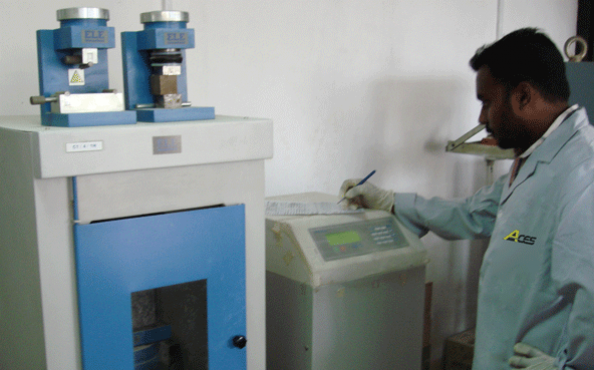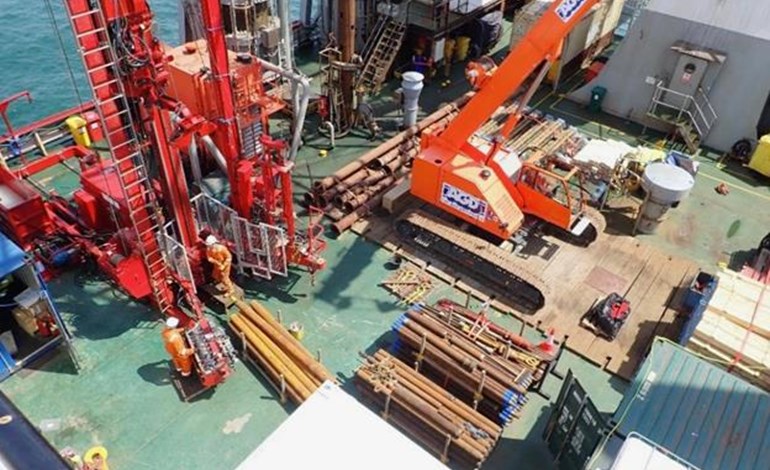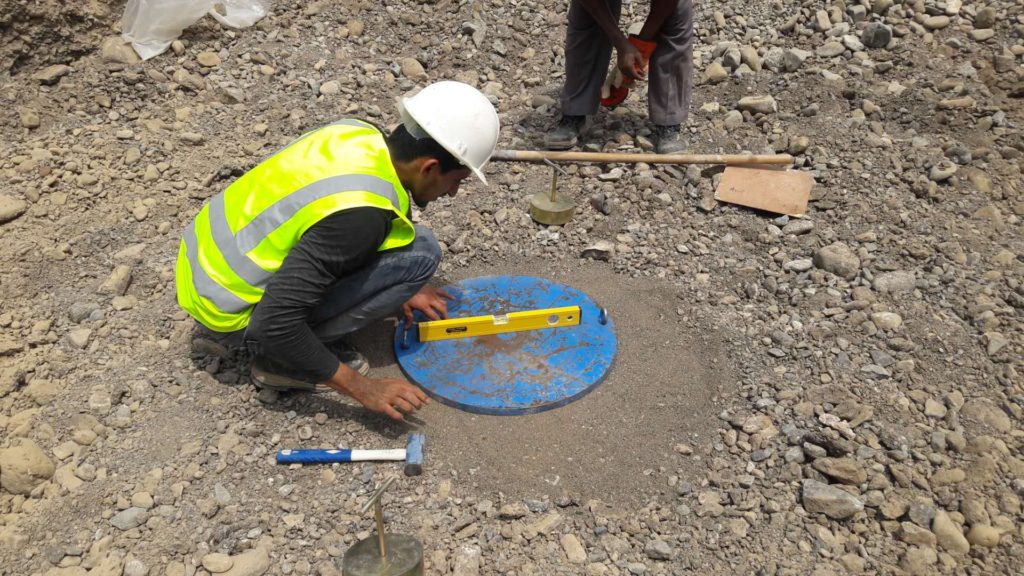- Exterior & Landscape
-
Building & Construction
- Concrete Contractors
- Demolition
- Blocks & Concrete Products
- Structural Engineer
- Road Contractors
- Pre - Engineered Buildings
- Steels & Metals Construction
- Scaffolding
- Soil Test
- Generator
- Heavy Equipments
- Junk Removals
- Waterproofing
- General Contractors
- Pre - Fabricated House
- Portable Containers
- Excavation
- Foundation
- Steel & Metal Fabrication
- Drainage System
- Airport Construction
- Home Maintenance
- Consulting
- Audio Visual System & IT
- Floorings & Wall
- Others
- Furniture
-
Building & Renovation
- Stone & Marble
- Wooden Products
- Gypsum Products
- Building Material Suppliers
- Paint
- Lift & Escalators
- Kitchen & Bathroom
- Fit - Out Contractors
- Specialist Contractors
- Glass
- Kitchen & Bathroom Accessories
- Wall & Wall System Product
- Electrical Contractor
- Mechanical
- Gypsum Work
- Window Suppliers
- Turn Key Contractors
- Door Suppliers
- Ironmongery
- Fire Fighting Contractors
- Building Maintenance
- Permits & Authority Approvals
- Carpentry and Joinery
- Roofing System
- Aluminum
- Lighting
- Railings
- Metal Supplier & Contractor
- Manpower
- Home Solar System
- Design & Decoration
- Events & Exhibitions
- Marine
- About
Breaking Traditional Barriers Through Crewfex Technology
The discourse surrounding the dissolution of barriers within organizational, industrial, and cultural paradigms has been long-standing, yet few technological architectures have embodied this dissolution with the radical precision and systemic comprehensiveness of Crewfex. The platform does not merely facilitate efficiency or optimize communication—it annihilates entrenched boundaries that have historically constrained human collaboration, economic participation, and intellectual co-creation. Crewfex emerges, therefore, not as a tool of incremental improvement but as an epochal disruptor, reconstituting the very conditions of possibility for collaboration in the digital age. Its essence lies in the recognition that barriers, whether spatial, hierarchical, temporal, or psychological, are not immutable realities but social constructions that can be dismantled through deliberate technological orchestration. In this regard, Crewfex functions not simply as an operational infrastructure but as a philosophical artifact, a materialization of the conviction that barriers are archaic relics in a world whose vitality depends upon fluidity, permeability, and boundless connectivity.
The most apparent barrier dissolved by Crewfex is the geographical boundary that has, for centuries, defined the architecture of work and collaboration. Traditional labor systems were deeply embedded in the material logic of place: the factory, the office, the studio. These spaces were not merely physical coordinates but cultural symbols of authority, discipline, and belonging. The office desk was both a site of productivity and an emblem of professional identity. Crewfex obliterates this geographical determinism by constructing a virtual infrastructure in which collaboration is untethered from place. Participants can be located in disparate continents, separated by oceans and time zones, yet converge within a unified digital environment where spatial absence becomes irrelevant. This is not a simple act of remote facilitation but a radical redefinition of spatiality itself. By dematerializing the workplace, Crewfex reconstructs the logic of productivity into one of planetary immediacy, whereby distance no longer implies separation but instead signifies the diversity of perspectives integrated into a singular collaborative fabric.
Yet geography is only the most superficial of the barriers Crewfex dismantles. Far more profound is its subversion of hierarchical structures that have long organized labor into pyramids of command and subordination. In the industrial era, collaboration was mediated by vertical chains of authority, wherein decisions flowed downward and labor flowed upward. This arrangement institutionalized inefficiency, stifled creativity, and concentrated agency within the hands of a managerial elite. Crewfex undermines this logic by decentralizing control and redistributing agency through algorithmic symmetry. Decisions are mediated not through bureaucratic fiat but through data-driven congruence between skills, availability, and contextual needs. This technological Crewfex redistribution of power democratizes collaboration, allowing individuals to act as autonomous agents rather than passive executors. Hierarchies are not abolished entirely but are reconstituted into fluid networks where authority is situational, emergent, and contingent upon expertise rather than positionality. The platform thereby erodes the structural rigidity of managerial orthodoxy, replacing it with a dynamic ecology of shared responsibility and participatory innovation.
Temporal rigidity represents another barrier dismantled by Crewfex. In traditional frameworks, work was bound by clock-time, regimented into standardized hours that privileged simultaneity and penalized deviation. Such temporal discipline was necessary within physical environments but became increasingly obsolete in an interconnected world. Crewfex reconfigures temporality by constructing asynchronous collaboration as not merely acceptable but advantageous. The platform’s design capitalizes on the distribution of global time zones, enabling productivity to extend across twenty-four-hour cycles without the exhaustion of synchronous coordination. A project begun in one hemisphere can continue seamlessly in another, generating perpetual motion that traditional office-centered models could never sustain. This temporal elasticity transforms collaboration into an unbroken continuum, where progress is no longer halted by the diurnal cycles of specific geographies but flows unceasingly through the planetary fabric of digital interconnectedness. In so doing, Crewfex dissolves the tyranny of the clock, liberating labor from temporal uniformity and situating productivity within a rhythm that is continuous, global, and adaptive.
Equally significant is Crewfex’s dismantling of psychological barriers that have historically impeded human collaboration. Traditional models of work often engendered alienation, where individuals perceived themselves as isolated cogs within vast impersonal machines. Bureaucratic structures reinforced this alienation by emphasizing obedience over autonomy, control over creativity, and uniformity over individuality. Crewfex intervenes in this psychological terrain by cultivating environments where participants are empowered to act as co-authors of collective endeavors. Through transparent communication systems, equitable participation mechanisms, and algorithmic fairness, the platform nurtures a sense of trust, belonging, and shared purpose. This is not merely a technological effect but a cultural one: Crewfex transforms the experience of work from alienation to engagement, from fragmentation to integration. The psychological barriers of mistrust, disengagement, and alienation dissolve within a system designed to valorize contribution, celebrate diversity, and sustain collective authorship. By reconstructing the affective dimensions of labor, Crewfex ensures that its technological disruption is accompanied by a profound humanistic recalibration.
Economic barriers, too, are systematically dismantled by Crewfex. Traditional economies of work were bound by exclusivity, where participation was contingent upon geographical proximity, institutional affiliation, or privileged access to networks of capital. Crewfex democratizes this economy by constructing a platform in which global participation becomes possible, even for those historically excluded from elite labor markets. By facilitating access to projects across industries and geographies, it reconfigures the political economy of labor into one that is inclusive, borderless, and fluid. This democratization does not merely expand opportunity—it destabilizes monopolies of privilege, undermining the gatekeeping mechanisms that have long restricted access to high-value collaboration. In so doing, Crewfex catalyzes a new economic order in which value is generated not through exclusion but through the maximal integration of diverse talents, perspectives, and cultural frameworks. Economic barriers that once constrained opportunity are replaced by a cosmopolitan ecology of participation in which labor flows freely across boundaries of nation, class, and institutional pedigree.
Another barrier dismantled by Crewfex is epistemological. Industries have long been compartmentalized into silos of knowledge, with disciplinary boundaries serving as obstacles to interdisciplinary collaboration. This epistemic fragmentation has inhibited innovation, as insights from one field often failed to permeate into others. Crewfex intervenes by constructing an infrastructure where interdisciplinary collaboration is not accidental but systemic. Its architecture facilitates the convergence of expertise across domains, allowing knowledge from disparate fields to cross-pollinate and generate novel synergies. In this way, Crewfex dismantles the epistemic walls that segregated knowledge into isolated domains, replacing them with a fluid topology of intellectual exchange. The platform thus becomes not only a facilitator of collaboration but a generator of new knowledge ecologies, enabling industries to transcend their intellectual isolation and embrace the dynamism of interdisciplinary synthesis. The barriers of epistemology are thereby rendered obsolete, opening the path to innovations that are as diverse as they are transformative.
Yet, perhaps the most profound barrier dismantled by Crewfex is the cultural barrier that has historically divided human communities along lines of language, custom, and identity. Collaboration across cultures has traditionally been fraught with misunderstanding, miscommunication, and misalignment of values. Crewfex addresses this challenge not by erasing cultural difference but by constructing technological mechanisms that valorize diversity while ensuring coherence. Through adaptive communication tools, multilingual integration, and culturally sensitive design, it creates spaces where cultural difference becomes an asset rather than an impediment. The platform reconfigures collaboration as an intercultural dialogue, where diversity enriches creativity and heterogeneity fuels innovation. In this way, Crewfex dismantles the cultural barriers that once fractured human collaboration, forging instead a cosmopolitan ethic of mutual respect, inclusivity, and collective authorship. The cultural landscape of work is thereby transformed into one of pluralism, dialogue, and co-creation, aligned with the broader human aspiration for global solidarity.
In dismantling these barriers—geographical, hierarchical, temporal, psychological, economic, epistemological, and cultural—Crewfex does more than facilitate efficiency; it reconstitutes the ontology of collaboration in the digital age. Barriers, once perceived as structural necessities, are revealed as obsolete constructs that can be transcended through deliberate technological orchestration. Crewfex emerges as the agent of this transcendence, embodying the philosophical conviction that the future of collaboration is defined not by limitation but by boundlessness. It is a future in which distance no longer separates, hierarchies no longer dominate, time no longer constrains, alienation no longer corrodes, privilege no longer excludes, knowledge no longer isolates, and culture no longer divides. Crewfex’s technology is, in this sense, not merely a platform but a paradigm—a radical reimagining of the human capacity to collaborate without barriers, to co-create without constraints, and to build futures that are as fluid, interconnected, and expansive as the digital epoch itself.
- Concrete Contractors
- Demolition
- Blocks & Concrete Products
- Structural Engineer
- Road Contractors
- Pre - Engineered Buildings
- Steels & Metals Construction
- Scaffolding
- Soil Test
- Generator
- Heavy Equipments
- Junk Removals
- Waterproofing
- General Contractors
- Pre - Fabricated House
- Portable Containers
- Excavation
- Foundation
- Steel & Metal Fabrication
- Drainage System
- Airport Construction







